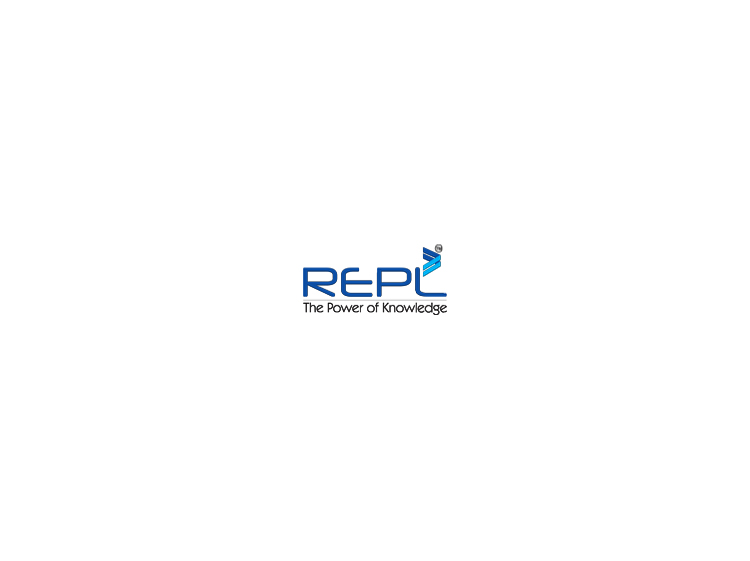Software Architecture & Technology
An architecture is the set of significant decisions about the organization of a software system, the selection of structural elements and their interfaces by which the system is composed, together with their behavior as specified in the collaborations among those elements, the composition of these elements into progressively larger subsystems, and the architectural style that guides this organization -- these elements and their interfaces, their collaborations, and their composition.Many definitions of architecture also acknowledge not only the structural elements themselves, but also the composition of structural elements, their relationships (and any connectors needed to support these relationships), their interfaces, and their partitioning. Again, each of these elements can be provided in a variety of ways. For example, a connector could be a socket, be synchronous or asynchronous, be associated with a particular protocol, and so on.
An example of some structural elements is shown in Figure 1. This figure shows a UML class diagram containing some structural elements that represent an order processing system. Here we see three classes -- OrderEntry, CustomerManagement, and AccountManagement. The OrderEntry class is shown as depending on the CustomerManagement class and also the AccountManagement class.

 Technology Research and Framework
technologies research are having a significant impact on the learning industry.Research technology have developed and are using web-based, Our work focuses on the effectiveness of a web-based virtual learning environment (VLE) in the context of basic information technology skills training. This article provides three main contributions. First, it introduces and defines the concept of VLE, discussing how a VLE differs from the traditional classroom and differentiating it from the related, but narrower, concept of computer aided instruction (CAI). Second, it presents a framework of VLE effectiveness, grounded in the technology-mediated learning literature, which frames the VLE research domain, and addresses the relationship between the main constructs. Finally, it focuses on one essential VLE design variable, learner control, and compares a web-based VLE to a traditional classroom through a longitudinal experimental design.
Framwork a framework is often a layered structure indicating what kind of programs can or should be built and how they would interrelate. Some computer system frameworks also include actual programs, specify programming interfaces, or offer programming tools for using the frameworks.
Dashboards and Analytics
Analytical dashboards focus on gaining insights from a volume of data collected over time – often the past month or quarter – and use this to understand what happened, why, and what changes should be made in the future. For instance, organizations may want to compare trends over time or identify why certain products are performing better in one sales region as opposed to another. Or companies might want to look at the success of marketing campaigns by combining sales data with product placement and marketing campaign strategy to determine the success of individual campaigns and areas for improvement. Analytical dashboards use sophisticated models, what-if analysis and pivots to identify patterns and opportunities, and to help align strategic goals with performance management initiatives. These dashboards are often used by business analysts, experts, who are responsible for outputting reports for general consumption. In short, analytical dashboards are meant to help an organization establish targets based on insights into historical data.
Collaboration Web Portals
Web collaboration provides an organization with the capability to collaborate with customers or internally via the Internet in real time. Web collaboration packages generally consist of Web-based tools within Web sites to assist an organization in the area of sales, new revenue-generation opportunities, and to enhance customer satisfaction. Web collaboration is essentially the back-end software or service that allows your center to share Web pages with customers while offering voice and text chat assistance or to conduct single or multi-user conferences and seminars. Web collaboration can be used in an Internet (IP) environment or integrated with an organizations' existing telephone infrastructure to provide automated customer assistance for a client's Web-based inquiries.
Usability Engineering
Usability engineering is a field that is concerned generally with human-computer interaction and specifically with devising human-computer interfaces that have high usability or user friendliness. It provides structured methods for achieving efficiency and elegance in interface design.
Usability is all about how users interact with technology, and usability engineering studies the human-computer interface (HCI) in depth. Usability engineering requires a firm knowledge of computer science and psychology and approaches product development based on customer feedback. A usability engineer works hand-in-hand with customers, working to develop a better understanding of the functionality and design requirements of a product in order to build more reliable data for it. According to Sun Usability Labs, six general attributes define usability:
Technology Research and Framework
technologies research are having a significant impact on the learning industry.Research technology have developed and are using web-based, Our work focuses on the effectiveness of a web-based virtual learning environment (VLE) in the context of basic information technology skills training. This article provides three main contributions. First, it introduces and defines the concept of VLE, discussing how a VLE differs from the traditional classroom and differentiating it from the related, but narrower, concept of computer aided instruction (CAI). Second, it presents a framework of VLE effectiveness, grounded in the technology-mediated learning literature, which frames the VLE research domain, and addresses the relationship between the main constructs. Finally, it focuses on one essential VLE design variable, learner control, and compares a web-based VLE to a traditional classroom through a longitudinal experimental design.
Framwork a framework is often a layered structure indicating what kind of programs can or should be built and how they would interrelate. Some computer system frameworks also include actual programs, specify programming interfaces, or offer programming tools for using the frameworks.
Dashboards and Analytics
Analytical dashboards focus on gaining insights from a volume of data collected over time – often the past month or quarter – and use this to understand what happened, why, and what changes should be made in the future. For instance, organizations may want to compare trends over time or identify why certain products are performing better in one sales region as opposed to another. Or companies might want to look at the success of marketing campaigns by combining sales data with product placement and marketing campaign strategy to determine the success of individual campaigns and areas for improvement. Analytical dashboards use sophisticated models, what-if analysis and pivots to identify patterns and opportunities, and to help align strategic goals with performance management initiatives. These dashboards are often used by business analysts, experts, who are responsible for outputting reports for general consumption. In short, analytical dashboards are meant to help an organization establish targets based on insights into historical data.
Collaboration Web Portals
Web collaboration provides an organization with the capability to collaborate with customers or internally via the Internet in real time. Web collaboration packages generally consist of Web-based tools within Web sites to assist an organization in the area of sales, new revenue-generation opportunities, and to enhance customer satisfaction. Web collaboration is essentially the back-end software or service that allows your center to share Web pages with customers while offering voice and text chat assistance or to conduct single or multi-user conferences and seminars. Web collaboration can be used in an Internet (IP) environment or integrated with an organizations' existing telephone infrastructure to provide automated customer assistance for a client's Web-based inquiries.
Usability Engineering
Usability engineering is a field that is concerned generally with human-computer interaction and specifically with devising human-computer interfaces that have high usability or user friendliness. It provides structured methods for achieving efficiency and elegance in interface design.
Usability is all about how users interact with technology, and usability engineering studies the human-computer interface (HCI) in depth. Usability engineering requires a firm knowledge of computer science and psychology and approaches product development based on customer feedback. A usability engineer works hand-in-hand with customers, working to develop a better understanding of the functionality and design requirements of a product in order to build more reliable data for it. According to Sun Usability Labs, six general attributes define usability:


Expert in Microsoft and Java based technologies
Database Optimization and Performance Tuning
- Provide developers with some developer-side database tuning techniques.
- Explain how developers and DBAs can work together effectively.
SQL Server Performance Tuning: Execution Plans
By the way: the Execution Plan tool in SQL Server can be useful for creating indexes. Its main function is to graphically display the data retrieval methods chosen by the SQL Server query optimizer. If you’ve never seen them before, here’s a detailed walkthrough. To retrieve the execution plan (in SQL Server Management Studio), just click “Include Actual Execution Plan” (CTRL + M) before running your query. Afterwards, a third tab named “Execution Plan” will appear. You might see a detected missing index. To create it, just right click in the execution plan and choose the “Missing Index Details…”. It’s as simple as that!
- Customer satisfaction
- Learn-ability
- Retain-ability
- Efficiency
- Utility
- Errors

Software Architecture
- Expert in Microsoft and Java based technologies
- Database Optimization and Performance Tuning
- Technology Research and Framework
- Dashboards and Analytics
- Collaboration Web Portals
- Usability Engineering
- Workflow Automation








